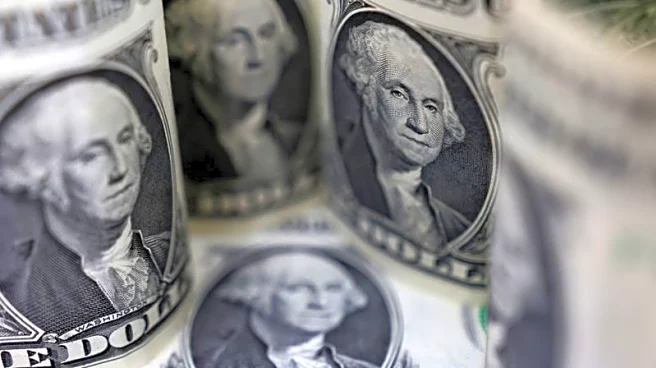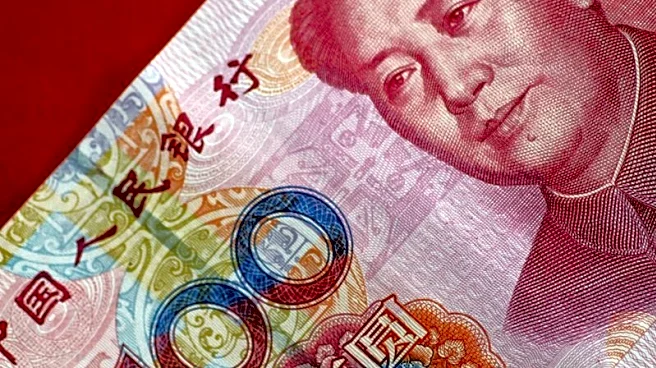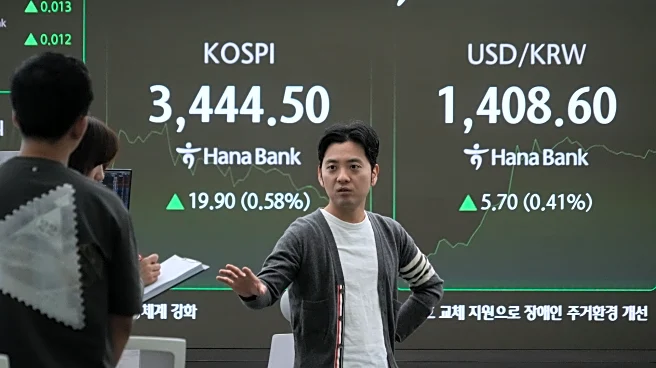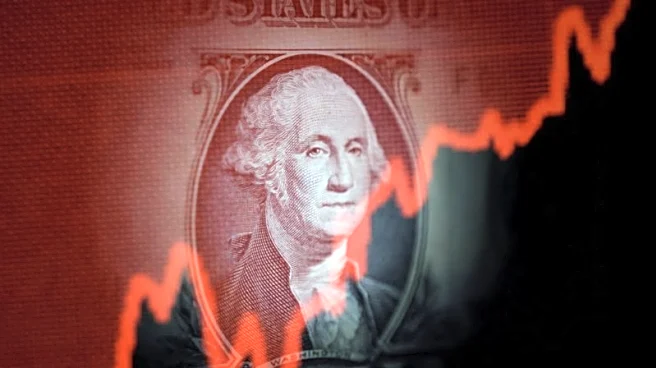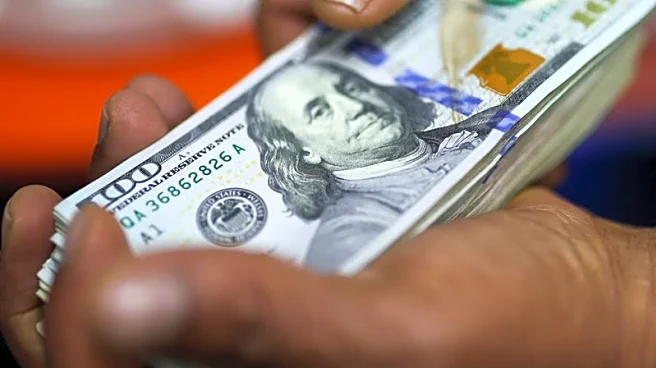What's Happening?
The U.S. dollar, traditionally strong, has been weakened by President Trump's tariffs, attacks on the Federal Reserve, and distancing from global institutions. Despite this, the dollar remains the primary currency in central bank foreign exchange reserves, according to IMF data. The dollar index suffered its worst first half of the year since the early 1970s, with gold, the euro, and the Chinese yuan poised to benefit from the dollar's challenges.
Why It's Important?
The weakening of the U.S. dollar could have significant implications for global trade and economic stability. As other currencies like the euro and yuan gain strength, international markets may experience shifts in currency preferences, affecting trade balances and investment flows. The dollar's position as a reserve currency remains crucial, but ongoing policy shifts could alter its dominance.
What's Next?
Future U.S. policy decisions, particularly regarding tariffs and international relations, will likely impact the dollar's standing. Central banks and investors may adjust their strategies based on currency performance, potentially diversifying reserves away from the dollar. Monitoring these developments will be essential for understanding global economic dynamics.
Beyond the Headlines
The dollar's challenges reflect broader geopolitical and economic shifts, including changing alliances and trade dynamics. Long-term effects may include increased volatility in currency markets and adjustments in global economic policies to accommodate new currency strengths.

